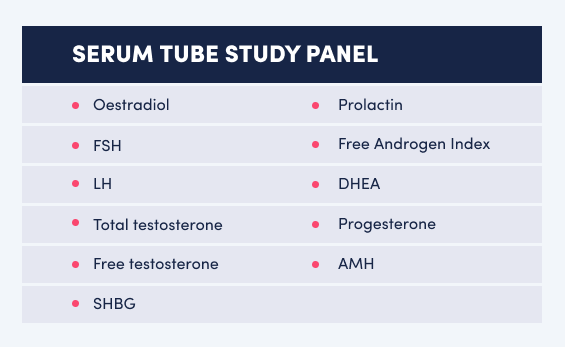.jpg)
The science behind oestradiol testing — a validation study
Dr Noel Young MBBS BSc, Medicine
November 30th, 2023
Accuracy, stability, and comparability are at the heart of Thriva's clinical governance and diagnostic innovation. Our in-house team of clinicians are committed to validating the testing of our biomarkers across a wide range of variables that span the entire fulfilment lifecycle — from collection type and location to sample carriage and handling conditions. We recognise that these variables can affect the reliability of results and are continually evolving our services to reflect this.
Context - what is oestradiol?
In late 2021 one of our partner labs, Inuvi Diagnostics, informed us that after undertaking verification studies on the comparability of oestradiol in capillary and venous blood their research had highlighted a negative bias in capillary samples collected using capillary SST gel tubes. Oestradiol, the predominant form of oestrogen in the body, can provide valuable insights into reproductive health and symptoms and is closely linked to bone health and heart disease risk. It has been a critical biomarker included in our hormonal insights test panel since 2020. After receiving this information we removed this biomarker from our hormonal test panels so that we could conduct an deeper independent assessment.
Study design
To investigate this further, we performed validation testing of oestradiol and several other commonly tested hormones (listed below).

This study aimed to validate the accuracy of capillary blood samples collected using plain serum microtainer tubes compared to venous samples collected with SST tubes (typically considered the gold standard).
After collection, the samples were couriered to our partner laboratory for analysis. The samples were paired — with one set tested on day one and another on day three, enabling us to assess sample stability by simulating typical carriage through the domestic postal network. An external clinical pathologist then analysed and verified the results to ensure accuracy.
Study findings
Oestradiol results were interchangeable between capillary and venous samples, showing that capillary testing using plain serum tubes is an accurate testing method for oestradiol. Oestradiol levels in capillary samples remained stable after three days. This means that plain serum capillary tubes are accurate for oestradiol, even if a delay in analysis occurs due to unforeseen postal disruption.
Luteinising hormone (LH) and follicle-stimulating hormone (FSH) were deemed interchangeable between capillary and venous samples. However, after three days, levels had a negative bias, and it was deemed preferable to use capillary SST tubes for these tests (as shown by a separate validation study).
Insufficient data meant conclusions could not be made for the remaining hormones tested — progesterone, prolactin, sex hormone binding globulin (SHBG), Anti-Mullerian hormone (AMH), total testosterone, free testosterone, free androgen index (FAI), dehydroepiandrosterone (DHEA).
Conclusions
Based on this study, the current recommendation is to test oestradiol on plain serum capillary tubes. These tubes are comparable to venous SST tubes for oestradiol testing and outperform capillary SST tubes (which carry a negative bias compared to venous SST tubes).
Results for other hormones analysed in this study have yet to be approved for use on serum tubes either due to better performance on SST tubes or insufficient evidence.
If you would like to learn more about Thriva’s clinical innovation, get in touch with a member of the team — visit Thriva Solutions today.